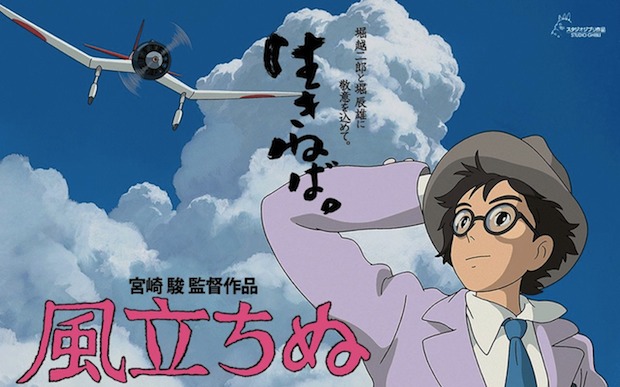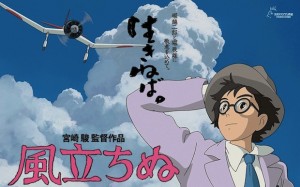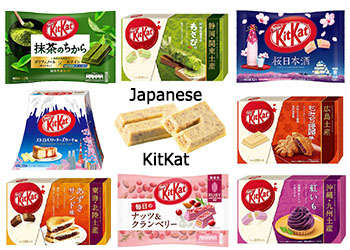Audiences are a bit divided about Hayao Miyazaki’s latest blockbuster anime, The Wind Rises, which takes as its subject the rather uncommercial story of an airplane designer.
However, perhaps more so than the film’s arguably anti-war message in a time of increasing militarims, or even Miyazaki’s recent article explaining why he is against reform of the Japanese Constitution, one other aspect of the film has been generating headlines.
Smoking.

In the film, in keeping with the pre-war period, there are lots of scenes showing people smoking. The film is not ostensibly a children’s film — it is, like all Miyazaki films, a family film but very engrossing for adults too — but it has surprised and irked some that an anime certain to be seen by lots of kids features so many shots of puffing.
Many people noted the extensive shots of characters smoking. And now the latest voice to be added to the clamor is the Japan Society for Tobacco Control. Although the scenes in hotels and restaurants use smoking for naturalistic purposes, the JSTC has particularly criticized the film for its scenes featuring the protagonist holding his wife’s hand while smoking when she is suffering from tuberculosis. Gratuitous depiction of smoking or just plain marital neglect?
Tobacco advertising is strictly controlled in Japan, despite the large numbers of smokers in the country (saying that, the numbers are falling). Japan Tobacco, for example, frequently advertises on TV but its commercials do not feature any actual smoking, a peculiar state of affairs which takes some getting used to. (The company also makes canned coffee, which isn’t as incongruous as it sounds. Coffee and cigarettes and all that…)
According to this interesting research paper about how Philip Morris succeeded in the Japanese tobacco market
the tobacco industry’s success in Japan was not only due to aggressive marketing, but also due to its strong influence on Japanese government tobacco control policy. The tobacco industry anticipated the ban on television advertising in Japan well in advance of its enactment, and worked to delay its implementation using the same strategies it successfully deployed in other parts of the world: hiring local experts and other third parties to speak on behalf of the industry questioning the relationship between advertising and youth smoking, and adopting incremental voluntary restrictions without outside enforcement as an alternative to stronger legislation. Moreover, the 1998 voluntary agreement that ended television advertising in Japan also preserved many of the alternative promotional activities the industry expanded during the prior decade.
Is The Wind Rises, then, an unwitting “alternative promotional activity” for the tobacco industry? Well, of course not, but in these more prissy times we can be easily shocked by period realism.
It’s not just Miyazaki’s anime. Research has highlighted the amount of smoking featured in manga and how it glamorizes the habit.
A preliminary study from the University of Tokyo showed that, of the top four selling boy’s comic magazines in Japan. . . teenage smokers accounted for 17.6% of the smoking depictions.
Ahead of its North America premiere at the Toronto International Film Festival, here is the English-subtitled trailer for The Wind Rises. Can you see any smoking?























